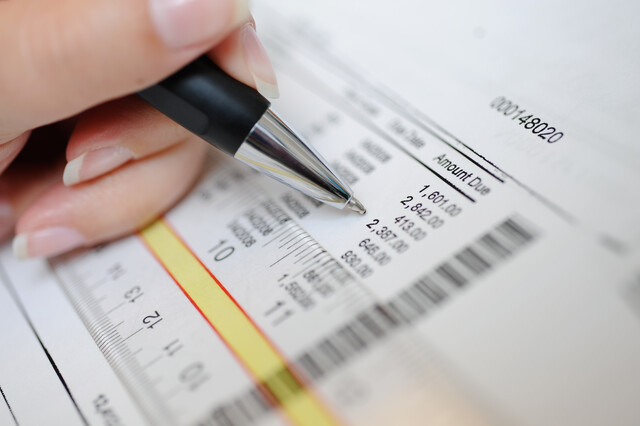This article will cover tips and methods for filing bankruptcy in the event it becomes necessary. Let's be frank, none of us goes into a business with the mindset that our business will ultimately need to file for bankruptcy. Bankruptcy is a term that is often counter intuitive to the entrepreneurial spirit. None of us likes to see our great dream struggle but there are times when unforeseen events occur and filing for bankruptcy becomes necessary. Some events we can plan for and some of them we have no control. The primary application or use of filing for bankruptcy is to minimize the impact on employees, business partners, customers, yourself, and your family.
Bankruptcy is a difficult topic business owners may struggle with. No one wants to feel as though they are a failure at a business venture, and it will be difficult, but the decision to file bankruptcy will mitigate other cascading factors from occurring. Every successful business plan contains an exit strategy in case things don't go as planned. No one wants to have the need for it but none the less, every business textbook and every business degree covers the topic of bankruptcy.
There are a number of causes for small business bankruptcies. One of the primary causes is a change in market conditions. We often see examples of this in the news when markets, up and down. A downward trend in the economy often results in business bankruptcies. The business market is linked to the economic market and experiences the booms and recessions. The main driver in this factor is competition from other companies for a smaller proportion of revenue. During these times business owners must become increasingly savvy on surviving a recession by determining their niche in the market. Businesses may also fail due to their specific financing. Their existing loans may be difficult to manage and with a decrease in business the situation becomes more difficult. It is equally difficult if lenders will not provide additional funding. As a small business owner it is difficult to pay high interest rates on short term loans. Another contributor to bankruptcy is a lack of planning on the business owners behalf. All entrepreneurs make mistakes but the prudent entrepreneur takes it on themselves to gain education and experience in the finance and management side of entrepreneurship.
You can never know too much in the management of your business. It is important to control the known factors which may lead to bankruptcy because there are so many factors beyond the entrepreneur's control. These factors include natural disasters, fires, floods, lawsuits, personal issues such as divorce, health issues, decline of a business location, or increased competition.
There are a number of bankruptcy filing factors which may determine which type of bankruptcy you will file. The bankruptcy forms are often referred to as chapters. These "chapters" are actually the chapter numbers within Title 11 of the United States Code called Bankruptcy or the Federal Bankruptcy Code. The four types of bankruptcy filings are:
- Chapter 7 - Liquidation
- Chapter 11 - Reorganization
- Chapter 12 - Adjustment of Debts of a Family Farmer with Regular Annual Income
- Chapter 13 - Adjustment of Debts of an Individual with Regular Income
Chapter 7 is the most common form of bankruptcy that is filed in the United States. All of the forms are based on an individual or companies financial situation. All of the bankruptcy forms have different applications and uses. We will briefly discuss their use and then elaborate into their specific application. Chapter 12 is for family farmers.
-
Chapter 7 bankruptcy may help save your business or help in liquidating it.
-
Chapter 11 bankruptcy may help restructure and eliminate debts and continue in operation.
-
Chapter 13 bankruptcy may help reorganize your business debts and require you repay a portion of the debt.
Let us begin with an overview of bankruptcy and then we will discuss each form. Bankruptcy is the process where businesses can eliminate or repay substantial debts using the protection of Federal bankruptcy courts. There are two types of bankruptcy, they are liquidation and reorganization. Under liquidation the court appoints a bankruptcy trustee who is permitted to take and sell your property to pay back your debt. This is called liquidation. Chapter 7 bankruptcy is a common form of liquidation. Chapter 13 bankruptcy is a similar process where you keep your property of must make monthly payments over a 3 to 5 year period to repay your debt.
If you are struggling with debt from your business bankruptcy will provide some relief. The degree to which filing for bankruptcy will help depends primarily on these factors:
-
The structure or legal form of your business which were Sole Proprietorships, Partnerships, Corporations, Limited Partnerships and Limited Liability Partnerships, S Corporations and Limited Liability Companies.
-
Your personal liability for the debts that were incurred for the business.
-
How much and what type of debts you have for the business.
-
Staying open or closed. Meaning are you planning to keep the business open or close the doors.
There may be alternatives to bankruptcy. Taking a non-bankruptcy route will definitely be better in the long run and you will be glad you persevered. Your initial concerns may include the desire to have creditors stop harassing you. Their actions are covered under the federal Fair Debt Collection Practices Act which prohibits debt collectors from engaging in abusive behavior with debtors. They are not permitted to contact you repeatedly at unreasonable times, make false claims, threaten you with violence or use profane language. If a debt collector that works for a collection agency violates the law, you can take steps to make sure they do not perform the same actions again. Tell them stop contacting you by sending them a letter telling them not to contact you or have further communications. Document their behavior and file a complaint with the Federal Trade Commission (FTC) that includes a collection agencies name and address and your documentation of the conversations or any audiotapes of the interactions. The immediate and constant contacts may be the most difficult part and here are some other options.
-
Negotiate your debt with your creditors. Offer to sell some assets and negotiate with them vs. filing for bankruptcy. Creditors are often willing to do so because they have more to gain in the long run. If you file for bankruptcy in the end they receive less money. By negotiating with their creditors you may be required to pay less debt than you owe and it will give you time to get your business back to normal operations.
-
Use a credit counseling agency. If you are uncomfortable negotiating with your creditors or collection agencies you may contact a nonprofit credit or debt counseling agency. These agencies will work with you to repay your debts to the creditors. Debtors are now required to complete Debtor Education and Credit Counseling before filing for bankruptcy. There are many state agencies that provide this type of counseling.
-
Debt Counseling. A debt counselor will help develop a repayment plan which is similar to filing for chapter 13 bankruptcy but no bankruptcy appears on your credit record. The only disadvantage from chapter 13 bankruptcy is that creditors can demand collection actions if you miss a payment which ultimately leads to chapter 13 bankruptcy. With this means is that you have a little less protection under debt counseling and you are required to pay all your debts in full. Whereas in chapter 13 bankruptcy you only pay a small portion of your debt back.
Chapter 7
After applying any options you can to prevent bankruptcy and it appears the bankruptcy is the only option. The two most common types are chapter 7 in chapter 13 bankruptcy. Chapter 7 involves the liquidation and chapter 13 involves adjustments of debt.
We will begin with chapter 7. Under chapter 7 bankruptcy your business will fall under what is called business chapter 7 bankruptcy. Chapter 7 is used primarily to shut down and liquidate your business. If you are a sole proprietor or a general partner of a partnership, you are personally liable for the debts of your company. If you are a limited partner, corporation, or limited liability company you are usually not personally responsible for the businesses debts. You cannot lose your personal assets only the business assets. Under this form of bankruptcy your property is sold to pay your debt. An immediate court stay is put into place and stops collection activities. When you file for this type of bankruptcy you are basically starting over from scratch. A court appointed administrator or trustee will sell your assets. These assets may be property liquidations or those of secured debt such as cars or equipment. Once your assets are liquidated the proceeds are used to pay creditors a portion of the money the portions which cannot be paid are forgiven or discharged. It is important to note taxes are not discharged under bankruptcy filing. If a significant portion of your debt falls under taxes you should consider filing chapter 13 bankruptcy. Using chapter 7 bankruptcy under the sole proprietorship you are able to wipe out debt and continue business operations. For a partnership the appointed trustee will close and liquidate the business of selling the assets to pay creditors. If there are not sufficient assets to pay off all the debt they may pursue your personal assets. A corporation can file chapter 7 bankruptcy. Chapter 7 will help of a corporation facilitate the liquidation of assets to pay creditors and places the burden of recovery on the trustees. A limited liability company can do the same unless a business owner has any personal liability for business debts and they must file for personal bankruptcy.
Chapter 11
Using chapter 11 bankruptcy a business can restructure its finances using a plan of reorganization approved by the bankruptcy court. This is done by reducing to businesses obligations to developing payment terms. Chapter 11 allows a business to balance its income and expenses and maintain operation. Chapter 11 bankruptcy is similar to chapter 13 bankruptcy that a difference that there is no limit the amount owed by the debtor. Chapter 11 was originally designed for major corporations.
Chapter 12
Chapter 12 bankruptcy is formally called Adjustment of Debts of a Family Farmer with Regular Annual Income. Very few people use Chapter 12 bankruptcy. To be eligible for Chapter 12 bankruptcy, at least 80% of your debts must arise from the operation of a family farm or fishery.
Chapter 13
Chapter 13 bankruptcy allows you to keep your assets while reorganizing and developing a payment plan. Only individuals can file a Chapter 13. If your business is considered a corporation or a limited liability company it cannot file Chapter 13 bankruptcy in its own name. During the bankruptcy you make monthly payments to a bankruptcy trustee. They pay your creditors.
The intent of this article is to give you a background in bankruptcy knowledge. The goal is to make sure you never have to file for bankruptcy. As an entrepreneur, you are smart enough to get yourself into a business, if it gets into trouble you are smart enough to get it out. Keep the mindset that your business will flourish again.
How to Avoid a Business Bankruptcy
There are steps you can take to avoid a bankruptcy by calculating your needs, being frugal, and negotiating better terms. To begin, determine how much you need to pay your creditors. What is the bare minimum monthly payment you could make? Determine the minimum amount necessary to keep your business afloat and maintain your personal expenses per month include a buffer of 20%. Determine your monthly sales and determine your monthly costs. Your cost include items such as rent, utilities, inventory, and employee payroll costs. Subtract your monthly debts from your monthly sales then add your personal expenses to keep the business afloat. This calculation will be the maximum amount you can spend on a monthly basis and the level you need to lower your costs to meet. The next step is to reduce costs to meet your monthly goal this includes doing a line by line audit of your business and the costs and eliminating any expenses you can by reducing waste or excess use. Once you have only reviewed all of your costs and reduced everywhere you can you should review all of your negotiated costs which include loan rates, negotiated contracts, leases, and monthly bills. Contact each of the associated bills and try to negotiate a lower rate or extended payments. Then, you should review your sales and see if there any opportunities to improve sales or extend your inventories.
If your business is struggling with debt it may feel like bankruptcy or closing your business is the only option. Before you do that, seek advice from a professional. They can suggest different ways of repaying your debt that do not involve bankruptcy or closing your business. There are many no cost financial advisers and counselors available in your area. You may also seek the help of financial specialists which are called turnaround management specialist they are financial experts who can take a second look at your business and determine the worst points and determine actions you can take.
Tips for preventing bankruptcy
These are some of the tools you can use to prevent to bankruptcy:
-
Payment modification plans, which indicate the amounts you can pay and when
-
Letters to creditors which explain your financial circumstance and explain which are willing to do. Contact all of your creditors in writing and explain that you are experiencing financial issues that make it impossible for you to make the current minimum monthly payments required on your accounts. Let them know if modifications cannot be made you will default on the payment.
-
Loan modifications which organized lending institutions and may provide you with additional time for lower rates for your loans.
-
Apply for a debt consolidation loan. Debt consolidation is not always the best option but it sure beats bankruptcy. The benefits of debt consolidation loan include a reduction in the amount of money paid to creditors each month, elimination of late charges and other penalties, and the convenience of one monthly payment on your debts.
-
Cutting your expenses, by determining bills that must be paid now or later and also looking reducing overhead costs.
-
Seek a debt agreement. In a debt agreement, you can offer to settle your debts by paying a lump sum that may be less than the amount you owe or freezing the debt for a certain time with a prolonged payback time until you get back on your feet.
As an entrepreneur you also want to manage your finances so that you have a clear representation of your financial picture. There are many tools you can use and will keep you on the right financial track, provide you with indicators on problem areas, and what to do to remedy the problems. These items include the following:
-
Internet based budgeting tools or tools from your financial institution these include budgeting software and tips and suggestions for your financial growth.
-
Credit monitoring services they provide free or low cost and monitoring so you do not have unexpected charges for identity theft. They can also be used to track your credit activity.
-
Debt calculators which help you to determine the best loan rates and understand the interest you pay on debt as well as how long it will take
-
Automatic bill pay is also very useful tool in your financial tool will. This helps make sure your bills are paid on time and you avoid late payments and interest fees.
-
Some banks and companies provide an additional discount simply by using electronic means for transactions. It saves them money by going paperless and they pass the savings on to you.
It doesn't hurt to brush up on your financial savvy and business management knowledge related to your business's liquidity, profitability, leverage and efficiency. You should always know how many days of cash you have available to cover your liabilities. You should know how many days of inventory you have and how a many days it takes to turn the inventory. You should know your debt to equity ratio and you should know your gross profit margin which is the percent of money left from sales after you subtract the cost of goods. A good entrepreneur determines their expenses very carefully and avoids unnecessary expenses.
These are some other common aspects you should look at in the prevention of business bankruptcy or failure.
-
Over dependence on a single customer who is a large portion of your business because it has customers lost you run the risk of financial hardship
-
Failure to maintain adequate cash reserves to plan for the six months
-
Failure to maintain a niche for your business
-
Failure to monitor or control growth
-
Failure to understand your customers and your market
-
Failure to price your products or services correctly
Summary Reminders and Takeaways
Bankruptcy is a scary proposition and not a position any entrepreneur wants to be in. There are a number of causes for small business bankruptcies such as changing market conditions, divorce, or supply issues. The most common forms are Chapter 7 which covers Liquidation, Chapter 11 which covers Reorganization, Chapter 12 which covers Adjustment of Debts of a Family Farmer with Regular Annual Income and Chapter 13 which covers Adjustment of Debts of an Individual with Regular Income.
Bankruptcy is counter intuitive to the entrepreneurial spirit. Some events we can plan for and some of them we have no control. The goal of filing for bankruptcy is to minimize the impact on employees, business partners, customers, yourself, and your family. Being organized, using banking tools, and properly managing your finances can help prevent bankruptcy. In the event your business is struggling you can see there are options to reduce the impact, slow, and even turn around the misfortune. Always set goals for your company to maintain profitability and focus on growth. If you maintain a forward thinking stance in your business you may avoid ever having to think about bankruptcy.































